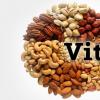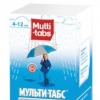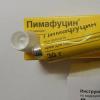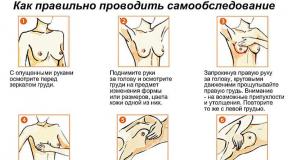Traditional German food in German. Traditional German dishes: names, recipes with photos. Die deutsche Küche - German cuisine
Theme: Der Borschtsch
Theme: Borscht
Heute möchte ich ihnen ausführlicher über mein Lieblingsgericht – über einen traditionellen Borschtsch erzählen. Meine Nationalität ist Ukrainerin, deshalb koche ich gern einen echten ukrainischen Borschtsch. Der, wer nie einen Borschtsch geschmeckt hat, hat im Leben vieles verloren. Man bezeichnet eine Abart der Suppe auf der Rübenbasis als Borschtsch, wegen der Rüben erwirbt die Suppe kräftige rote Farbe.
Today I want to tell in more detail about my favorite dish - the traditional borscht. I myself am Ukrainian by nationality, so I really like to cook real Ukrainian borscht. Anyone who has never tried borscht has lost a lot in life. Borscht is a type of beet-based soup, due to which borscht acquires a rich red color.
Überhaupt gilt der Borschtsch als ein Nationalgericht der östlichen Slawen. Für die Ukraineer ist der Borschtsch die erste Hauptmahlzeit der traditionellen nationalen Küche. Ein gleichartiges Gericht gibt es bei den Polen, Litauern, Rumänen und Moldauern. Bei all diesen Nationalitäten gibt es ihre eigenen Feinheiten und Unterschiede in der Zubereitung dieses Gerichts. In alten Zeiten begriff man als der Borschtsch eine leckere Suppe aus Bärenklau. Dann hat man den Borschtsch auf einen speziellen Quas aus den Rüben zu kochen begonnen: dieses Gebräu wird mit dem Wasser gefüllt, dann wird diese Mischung in einen dauerhaften irden Topf gegossen und es wird zum Kochen gebracht. Weiter werden in kochendes Wasser geschnittenes Gemüse hinzugefügt: frische Rüben, ein wenig Kohlen, Karotten und andere Gemüse, die im Überfluss auf den Feldern gewachst wurden. Weiter wird dieser Topf an ein starkes Feuer gestellt. Diese bereits fertige Suppe wird gesalzen und gewürzt.
In general, borscht is considered the national dish of the Eastern Slavs. For Ukrainians, borscht is the main first course of traditional national cuisine. Poles, Lithuanians, Romanians and Moldovans have a similar dish. All these nationalities have many subtleties and differences in the preparation of this dish. In the old days, borsch meant a delicious stew made from hogweed. Then they began to cook borsch on a special beet kvass: this kvass was poured with water, then the mixture was poured into a strong clay pot and brought to a boil. Next, chopped vegetables were added to the boiling water: fresh beets, cabbage, carrots and other vegetables that grew in abundance in the fields. Then the pot was put back on the fire. Already ready borscht was well salted and seasoned.
Die genaue Herkunft dieses Gerichts ist genau nicht bekannt. Es gibt eine Wahrscheinlichkeit, dass der Borschtsch auf dem Gebiet vom ehemaligen Kiewer Ruß erschienen wurde, wo er seine Verbreitung erhielt und seine Liebe des gemeinen Volkes gewann. Der Borschtsch hat nicht nur dem gemeinen Volk gefallen, sondern auch den Leuten aus der hohen Gesellschaft: es ist genau bekannt, dass diese Suppe die berühmten Regenten Ekaterina II., Alexander II., die berühmte Ballettänzerin Anna Pawlowa.
The exact origin of this dish is not exactly known. There is a possibility that borscht appeared on the territory of the former Kievan Rus, where it gained its distribution and won the love of the common people. Borscht fell in love not only with the common people, but also with people from high society: it is known for certain that the rulers Catherine II, Alexander II, the famous ballerina Anna Pavlova loved borscht.
Die Abarten von dieser Suppe
Varieties of borscht
In den verschiedenen Regionen bereitet man Borschtsch ganz anders. Im großen und ganzen, kann man die zwei Haupttypen dieses bekannten Gerichtes auszeichnen:
In different regions, borscht is prepared in a different way. In general, there are two main types of this famous dish:
Der rote Borschtsch (er wird heiß aufgetragen) ist ziemlich in der Küche der verschiedenen Völker weit verbreitet, diese Art von Borschtsch ist im Russland und in der Ukraine sehr beliebt;
Red borscht (served hot) is quite common in the cuisine of various nations, especially this type of borscht is popular in Russia and Ukraine;
Einen kalten Borschtsch bevorzugt man vor Allem für die Zubereitung in der Frühlings- und in der Sommerzeit.
Cold borsch is preferred mainly for cooking in spring and summer.
Der rote Borschtsch
Red borscht
Die wichtigste Komponente für dieses Gericht ist eine übliche Kartoffel (er war und bleibt die wichtigste von der zweiten Hälfte des XIX. Jahrhunderts). Dort fügt man den Kohl, Karotten, frische heftige Zwiebel, Petersilie, Kräuter und frische Rüben für die Fügung der Speise eine gesättigte rote Farbe. Die Basis für dieses Gericht ist eine gute Brühe. Wenn man die fertige Suppe aufträgt, wird er traditionell mit der sauren Sahne gewürzt. Man isst das unbedingt mit dem frischgebackten Roggenbrot. Während der russisch-orthodoxen Fastenzeit wird der Borschtsch ohne Zugabe von Fett und Fleisch, nur im normalen Sonnenblumenöl mit Pilzen oder mit dem Fisch gekocht. In der Ukraine isst man traditionellerweise einen Pilzborschtsch mit den „Öhren“, das sind so kleine Knödel aus dem Teig mit der Füllung.
The main component for this dish is the usual potato (it has been and remains the main one since the second half of the 19th century). Cabbage, carrots, fresh plucked onions, parsley, herbs and fresh beets are also added there to give the dish a rich red color. The basis for this dish is a good meat broth. When ready-made borscht is served on the table, it is traditionally seasoned with sour cream. It is always eaten with freshly baked rye bread. During Orthodox fasts, borscht is prepared without the addition of fat or meat, only in ordinary sunflower oil with mushrooms or fish. In Ukraine, at Christmas, they traditionally eat mushroom borscht with “ears”, these are small dumplings made from egg dough with filling.
Der Kalte Borschtsch
Cold borscht
Es wird überwiegend im heißen Sommer gekocht. Die Grundlage dieses Gerichts ist die Rübe in der Marinade oder einfach gekocht, in einigen Regionen fügt man zu den Rüben einen Kefir und andere Milchprodukte hinzu, alles andere wird im Rohzustand ergänzt: Kräuter, Petersilie, Knoblauch usw. Nach der Zubereitung serviert man den kalten Borschtsch in der Regel mit der fettigen sauren Sahne und hartgekochten Eiern. Man isst den kalten Borschtsch oft mit den gekochten und gekühlten Kartoffeln anstatt des Brotes.
It is made mainly in hot summer. The basis of this dish is marinated beets or simply boiled beets, in some regions kefir or other sour-milk products are also added to beets, everything else is added raw: greens, parsley, garlic, etc. After cooking, cold borscht is usually served with rich sour cream and hard-boiled eggs. They eat cold borsch often with boiled and chilled potatoes instead of bread.
Die Technik der Zubereitung dieses traditionellen ukrainischen Gerichts
Cooking technique of this traditional Ukrainian dish
Der Borschtsch gilt als ein gewürztes mehrteiliges Gericht, und er ist ziemlich kompliziert technologisch in der Zubereitung. Obwohl es für mich persönlich nicht schwer ist, dieses Gericht vorzubereiten. Die Hauptkomponente der beliebigen Arten von Borschtsch ist eine Rübe, die die Farbe und einen besonderen Geschmack und ein Aroma diesem Gericht gibt. Wegen der großen Menge von Gemüse in den Zutaten dieses Gerichts gilt er als eine Gemüsesuppe. Der Borschtsch hat eine Menge von Abarten und seine eigene Besonderheiten der Zubereitung in der jeweiligen Region. Der wichtigste Unterschied besteht in den verschiedenen Brühen, die als eine Grundlage unserer Suppe werden, das ist vor allem wegen der Kombination aus den verschiedenen Fleisch-, Geflügel- oder irgendwelchen Wurstwaren, sowie wird eine Unterschied wegen des Gemüsesatze s entstanden. Neben den traditionellen Karotten, Kartoffeln, Zwiebeln und Tomaten, können sich in den Zutaten vom Borschtsch in einigen Regionen Bohnen, Zucchini, die Runkelrüben und sogar die Äpfel befinden. Der Borschtsch kann sich auch durch ein Sammel von Gewürzen auszeichnen, die diesem Gericht einen gewürzten Geschmack geben können.
Borscht is considered a filling multi-component dish and is quite technologically difficult to prepare. Although personally for me to cook this dish is not at all difficult. The main component of any variety of borscht is beetroot, which gives color and a special taste and aroma to this dish. It is due to the large number of vegetables in the composition of this dish that it is considered vegetable. Borsch has many varieties and has its own cooking characteristics in each individual region. The main difference lies in the various broths that will be the basis of our borscht, this is mainly due to the combination of various meats, poultry or some sausages in the broth, and the difference also arises due to the set of vegetables. In addition to traditional carrots, potatoes, onions and tomatoes, borscht in some regions may include beans, zucchini, turnips and even apples. Borsch can also be distinguished by a set of spices that are used to spice up the dish.
sein verb
Verb sein considered one of the most "terrible" topics in German, but in fact, it couldn't be easier. The main thing is to immediately realize that the verb sein has two meanings- semantic And Auxiliary. We have already touched on the verb sein, and now it is worth talking about it more extensively.
Semantic:Conjugation of the verb sein:
In Russian: In German: I amich binyou aredu bisthe/she/it iser/sie/es istwe arewir sindyou (pl.) areihr seidthey aresie sindyou (of) eatSie sind
*Of course, in Russian we do not speak with "is".
In Russian, for all pronouns, - EAT, and in German everyone has a different word, but it also means - EAT And together these words are called SEIN. That's the whole secret. That is, you just need to apply Sein in a specific form to a specific pronoun.
Example: I am - Ich bin / You are - Du bist / We are - Wir sind
Verb sein used for: who you are, your condition, your…
Ein junger Hase - (One) young hare
The text will be written in German with a parallel LITERAL translation into Russian.
Ein kleines Tier wohnt in einem märchenhaften Wald.
Das Tier ist ein junger Hase.
Der liebt oft in einer kleinen und schönen Stadt spazierengehen.
Dieser Hase heißt Doni und er ist sehr nett.
Seine Frau ist auch sehr schön und jung.
Aber in diem Märchen sprechen wir über den Hase Doni.
Doni hat ein altes, schönes und gemütliches Häuschen. Auch fährt er gern mit seinem Fahrradum den Wald herum. Am Wochenende möchte er in diese Stadt fahren, um ein schönes und kleines Fahrrad für sich zu kaufen.
Er hat schon ein altes Fahrrad, trotzdem will er ein neues.
Normaleweise fährt er durch den Wald oder den Park.
Dieser Park liegt entlang den Wald.
Neben dem Parkgibt es einen großen Markt.
Auf diesem Markt kauft er viele Möhren für seine kleine Familie.
Wahrscheinlich geht er auch am Samstag auf diesen Markt zu Fuß oder mit seinem alten Fahrrad.
Aber muss er zuerst in d…
German Lesson 1 - Alphabet, reading rules, the verb sein, sentence construction.
To begin with, you must decide why you need the German language, and then just start learning it. You can simply lose time if you start learning not from scratch, but from some level. German is not difficult, it is logical. If you find the right way to study. A1- Very simple. You will be able to ask something, get information, basically sure dictionary user, short sentences, standard phrases. Vocabulary approximately 1500 words.
Still, it is logical to start learning from the alphabet, since letters are the basis of speech.
The German alphabet consists of 26 letters, 3 umlauts and 1 escet: A a [A]B b [Be]C c [Tse]D d [De]E e [E]F f [Ef]G g [Ge]H h [Xa]I i [I]J j [Yot]K k [Ka]L l [El]M m [Um]N n [En]Oh o [Oh]P p [Pe]Q q [Ku]R r [Er]S s [Es]T t [Te]U u [U]
German text level A1 - Mein Wochenende.
Mein Wochenende. Am Samstag waren wir im Wald. Wir sind mit dem Fahrrad gefahren und dann sind wir ins Schwimmbad gegangen. Im Schwimmbad haben wir viel gebaden. Nach dem Schwimmbad haben wir den Orangensaft getrunken. Am Abend hat meine Frau einen Kuchengebacken. Wir haben den Kuchen gegessen. Mein Sohn liebt den Kuchen. Nach dem Abendessen haben wir mit dem Ball gespielt.
Das ist mein Wochenende!
My weekend. On Saturday we were in the forest. We rode bicycles and then we went to the pool. We swam a lot in the pool. After the pool we drank orange juice. In the evening my wife baked a cake. We ate it. My son loves pie very much. After dinner we played ball. This is my weekend!
Very popular in Europe. As for our country, the majority of culinary specialists prefer to cook primordially Russian dinners. Although some housewives still try to diversify their menu and make German dishes. About what ingredients they include in their composition, as well as what features they have, we will tell in the presented article.
General information about German cuisine
German cuisine is ancient cuisine. It originates from the time of Roman rule. It was then that the ancient Germans lived on the territory of modern Germany.
German dishes can be different, and also have their own characteristics. As a rule, it depends on a particular region of the country where they are consumed. There is no unity in German cuisine. The southern regions of Swabia and Bavaria can boast of abundance.
Meat and sausages
It is no secret to anyone that sausages, as well as in general, are one of the most beloved dishes in all regions of Germany.
As for meat, almost all German dishes necessarily include pork and beef. According to statistics, the average German eats about 84 kg of meat per year.
Germany is the main producer in Europe for the production of various types of sausages. It is believed that more than 1,500 types of sausages are made in this state.
Favorite vegetables in Germany
Along with meat, almost all German dishes contain a large amount of vegetables. They are used both as a side dish and as part of thick mashed soups.
The most widespread in this country are the following spinach, carrots, beans, peas, as well as various varieties of cabbage. It should also be noted that German cuisine quite often includes tomatoes, lettuce and cucumbers. By the way, most meat dishes in Germany are served with fried onions. It is also often used both in pickled and fresh form.

Traditional German dishes are very similar to Russian national dishes. History contributed to this. For example, after World War II, sauerkraut became very popular in Germany. Today the Germans consider it their national dish. By the way, in English there is even a word Sauerkraut borrowed from German. It literally means "sauerkraut". Because of their excessive love for this product, the inhabitants of Germany received such a playful nickname as Krauts.
bread products
Few people know, but approximately 350-650 different types of bread are produced in Germany. White bread made from wheat flour, as well as black, rye, etc., are very popular among Germans.
Most types of bread products in Germany are made from rye and wheat flour. By the way, this is where such a German name as Mischbrot, that is, "mixed" bread, came from.
It should also be noted that pumpkin or sunflower seeds are sometimes added to the dough.
German hot dishes are not eaten without bread. After all, it is the most important part of the family table. Bread is also eaten for breakfast, as well as as part of hearty sandwiches in the evening.
The importance of this product in German cuisine is evidenced by terms such as Abendbrot (dinner), literally meaning "evening bread", and Brotzeit (snack or lunch), which translates as "bread time".

Drinks in Germany
Now you know what ingredients German national dishes can include. However, speaking of Germany, one cannot but recall such a foamy drink as beer. As you know, it is very popular not only among Germans, but throughout the world.
In most parts of Germany, Pilsner is the favorite beer. Although it should be noted that the inhabitants of the southern part of the country (especially the Bavarians) quite often drink other varieties of the drink (for example, wheat beer or lager).
Some also produce their own beers (local). For example, along the lower reaches of the Rhine, in the city of Cologne, they make Kölsch and the dark Altbier.
It is impossible not to say that since 1990, such a sort of foamy drink as Schwarzbier has become widespread in the united state. Also in Germany, "Schnapps" and cocktails that are made on the basis of beer (for example, beer with lemonade) are very popular.
The most popular German dishes: cooking recipes
As in our country, in Germany it is customary to have breakfast, lunch, afternoon snack and dinner. Snacks between main meals are also not excluded.
In this article, we decided to tell you about what the Germans prefer to consume in the morning, afternoon and evening. In addition, we will tell you exactly how German national dishes are prepared and what you need to purchase for this.
Delicious breakfast - apple fritters in a frying pan

German dishes, whose names are practically no different from Russian ones, are prepared quickly and easily. If you want to heartily feed your family at breakfast, then we suggest making apple pancakes. For this we need:
- light sugar - 2 dessert spoons;
- white flour - 300 g;
- medium-sized eggs - 4 pcs.;
- vanilla extract - a small spoon;
- sea salt - a pinch;
- gin (optional) - large spoon;
- whole milk - a full glass;
- vegetable oil (use without aroma) - a large spoon;
- sweet red apples - 3 pcs.
The process of making pancakes
To prepare a German breakfast, eggs, salt, vanilla extract and sugar are mixed in one container and beaten with a mixer. Light flour, gin and vegetable oil are also added there. All ingredients are well mixed.
As for apples, they are washed, peeled and cut into circles.
After the described actions, put a thick-walled pan on medium heat and add a little oil. Then they take pieces of fruit one by one and dip them into the batter. In this form, apples are placed in a pan and poured with a large spoonful of base. Products are fried until golden brown. After both sides of the pancakes are browned, they are laid out on a dry towel to remove excess oil.
Breakfast is served warm to the table. Pre-pancakes are sprinkled with cinnamon and sugar, and also decorated with cream and mint.
Hearty lunch - side dish Guttenberg with German sausages

Dishes of German cuisine, the recipes of which few housewives know, quite often include various vegetables. For example, the traditional German side dish Guttenberg cannot be sold without such a product as cabbage. As a rule, this dish is served for lunch along with classic sausages. But first things first.
So, to prepare the Guttenberg side dish, we need:
- sauerkraut - 500 g;
- onion bulb - large head;
- potato - 1 tuber;
- garlic cloves - 2 pcs.;
- black peppercorns - 7 pcs.;
- lavrushka - a large leaf;
- vegetable oil - 3 large spoons;
- boiled water - 2/3 cup.
Cooking method
To prepare the dish in question, all vegetables are thoroughly washed and cleaned. Then they are cut into small pieces and proceed to heat treatment. To do this, take a deep saucepan, heat vegetable oil in it and fry onion half rings. After that, sauerkraut, whole cloves of garlic, peppercorns, salt and all the ingredients are mixed well and stewed in their own juice for ¼ hour.
At the end, drinking water, potato slices are added to the dish and the heat treatment is continued for about half an hour.
After the Guttenberg side dish is ready, it is immediately presented to the table. To do this, stewed cabbage is placed on a plate, and a couple and a slice of bread are placed nearby.
Nutritious afternoon snack - beef with egg

As mentioned above, the inhabitants of Germany cannot imagine their life without a good piece of meat. Beef with egg is a very hearty and tasty dish, which is most often served with an afternoon snack. To prepare it, we need:
- fat-free beef - about 600 g;
- onion bulb - large head;
- mustard wet ready - about 30 g;
- butter - about 70-100 g;
- large eggs - 4 pcs.;
- vegetable oil - use at discretion;
- spices - apply to your liking.
Ingredient Processing
Dishes of German cuisine, recipes with photos of which we are considering, are very satisfying and high-calorie. Before cooking them on the stove, all components should be processed.
The beef is thoroughly washed, and then chopped in a meat grinder along with a large onion. After that, wet mustard, pepper and salt are added to the minced meat. All ingredients are thoroughly mixed, and then they are picked up and formed into flat and round cutlets.
Heat treatment of cutlets and eggs
After making a few beef cutlets, they are dipped in a grill pan with vegetable oil and fried over medium heat.
After all the products are ready, they are taken out and laid out on a separate plate. As for the pan, melt the butter in it and alternately fry the fried eggs.
Serving for afternoon
The finished dish is served to the table on a flat plate. A beef patty is first placed on it, and then it is covered with a fried egg. Nearby have fresh vegetables and herbs.
Fragrant dinner - dumplings in German

German dumplings can be made in different ways. We decided to present the most popular recipe. To implement it, we need:
- lean pork - 500 g;
- large onion - 2 pcs.;
- juicy carrot - 1 pc.;
- potatoes - 500 g;
- fresh soft tomatoes - 2 pcs.;
- small egg - 1 pc.;
- cold water - 100 ml;
- fat sour cream - 150 g;
- light flour - approximately 250 g;
- vegetable oil - 2 large spoons;
- spices and herbs - at the discretion.
How to prepare a dish?
To prepare the dish in question, lean pork is thoroughly washed, dried and cut into small pieces. Then the meat is put in a saucepan, vegetable oil is added and fried until golden brown. Finely chopped onions with carrots are also separately sautéed.

As for fresh tomatoes, they are peeled, chopped and laid out with vegetables. All ingredients are stewed for about 5 minutes, and then added to the meat. Products are salted, peppered and spread with your favorite spices. Also, a little water is poured into them and stewed over medium heat for about ¼ hour.
Meanwhile, peel the potatoes and cut them into medium pieces. The tubers are added to the meat and boiled until tender. After that, they begin to sculpt dumplings. To do this, beat the egg with a fork, combine with salt, pour in water and gradually add flour.
Having kneaded a stiff dough, it is rolled out in a thin layer, and then smeared with thick sour cream. The dairy product is evenly distributed over the entire surface of the base and rolled into a tight roll. The resulting product is cut into pieces 3 centimeters thick.
All dumplings are lowered into the prepared meat broth with potatoes and boiled over medium heat for about 10 minutes. At the end, chopped greens are added to the dish, removed from the stove, distributed on plates and served.
Making a delicious German dessert
The sweet German dish "Strudli" is known to many residents of our country. To prepare such a dessert on our own, we need the following components:
- yeast-free puff pastry - about 500 g;
- frozen or fresh cherries - 1 cup;
- seedless dark raisins - 3 large spoons;
- breadcrumbs - 2 large spoons;
- egg yolk - from the 1st large egg;
- vanilla sugar - apply to taste;
- walnuts (chopped and roasted) - 50 g;
- butter - at least 100 g.

Making dessert
In order not to waste time in vain, puff pastry can be purchased at the store, rather than kneading yourself. You also need to prepare the berries. Cherries are best used fresh. But if you decide to make such a dessert in the winter, then you can use a frozen berry.
After the main ingredients are prepared, you should start rolling out the dough. It is taken out of the freezer in advance and thawed completely. Then the base is sprinkled with flour and a thin rectangular layer is made from it. To make the German strudel as tender and tasty as possible, it is recommended to roll out the dough only along one side. So its numerous layers will be preserved in its entirety, which will make the dessert lush and soft.
After the dough layer is rolled out, it is generously smeared with melted butter, and then sprinkled with raisins, chopped and roasted walnuts. Also, berries are evenly laid on top of the base, which are flavored with vanilla sugar. At the end, the dough is wrapped with a tube, after which it is smeared with beaten egg yolk.
In this form, the semi-finished product is placed in the oven, where it is baked for about half an hour at a temperature of 200 degrees.
After the German strudel is ready, it is carefully removed and cooled. After cutting the puff dessert into portions, it is flavored with powdered sugar and presented to the table along with a cup of hot tea.
Undoubtedly, each country is individual. Moreover, differences can be seen in everything, from the state structure, mentality, lifestyle of the inhabitants of this country, and ending with daily habits. The kitchen in this case is no exception! And the national cuisine of Germany has long been legendary!
A bit of history about German cuisine
Unfortunately, we know very little about how truly German cuisine was born. Historians report that it originated in ancient Rome, but it really began to develop only at the beginning of the 20th century. This is connected, first of all, with the political structure of the country. Today, Germany consists of 16 federal states, and earlier many of them belonged to other states.
The culinary habits of modern Germans were formed precisely under the influence of such a division. The first progress in this area began in the late 19th and early 20th centuries, when Wilhelm II took power. His reforms affected not only the political system, but also the cultural traditions of the country, in particular, culinary. The monarch literally banned experiments in the kitchen, especially with the use of wine, spices, etc. Then it became a tradition to eat boiled potatoes with meat and a small amount of sauce, as well as cabbage. It was this kind of food that the ruler himself preferred.
Wilhelm II ceased to rule the state after the First World War. At that time, the country was literally dying of hunger, and there was no question of following any culinary traditions.
The truly intensive and effective German national cuisine began to develop only after World War II, and this was due to the appearance in the country of a large number of collections of recipes from other countries. They began to open catering establishments, the dishes on the menu of which simply amazed with their diversity.
Today, German cuisine can rightly be called one of the most famous and popular in the world. Moreover, each land has its own culinary preferences, formed during its formation. So, let's learn about German cuisine!
Dishes of German cuisine: what they prefer to serve on the table in different federal states of Germany
Bavaria. Perhaps the most favorite first course of the Bavarians is soup with liver dumplings. For the second, they prefer fried pork with potato dumplings and, of course, fried sausages. When it comes to drinks, everyone knows that Bavaria is famous for its beer. The Germans not only appreciate its taste, but also know how to produce it. A huge number of breweries make this foamy drink all year round. In addition, the northern part of the land is famous for its winemakers. 
Baden-Württemberg. The national dish of this land is shpetzle. It is homemade vermicelli, which includes flour, eggs, water and salt. Swabian ham, spruce honey and cherry cake are also famous. In May and June, asparagus is most often found on the tables of the inhabitants of Baden-Württemberg. Of the drinks in this land, they prefer the wines of the Rhine vineyards. 
Saxony. This federal land is famous, first of all, for its confectionery masterpieces - sand cakes, cookies, etc. So, local rolls are known all over the world - “kriststollen”, cakes with “glaze” made from cheese, raisins, eggs and almonds - “eiershnecken”, and, of course, Saxon pancakes - “plinzen”. Of the drinks in this land, they prefer local beer or wine. 
Thuringia. The inhabitants of this land generally love to have a tasty snack! And most often on their table you can see such a dish as potato dumplings. But fried Thuringian sausage is famous throughout Germany. 
Hesse. This cuisine is characterized by such a dish as green sauce. This sauce is prepared from spring. This sauce goes well with boiled pork, eggs and boiled jacket potatoes. The highlight of Hessian cuisine is handmade cheese. This cheese belongs to the soft types, prepared with the addition of onions, oil and vinegar. Drink here, as a rule, apple varieties of wine. By the way, the wine produced in the Rheinghaus is especially famous among German wines. 
Rhineland-Palatinate. The food here is simple, but quite satisfying. Traditionally, “zaumagen” is prepared here - a pork stomach with various stuffing options, veal kidneys with a side dish of wide pasta, a roast marinated in vinegar, etc. For drinks, wines are preferred here. 
Saar. The culinary delights of the Saar often reflect French food traditions. The fragrant wine drinks of this country are known throughout Germany. 
Berlin. Berliners' favorite food is boiled pork leg, sausages, sauerkraut, ribs. From drinks here they prefer white beer, diluted with raspberry syrup. In particular, this beer is relevant in the summer season. 
Brandenburg. The most famous dish here is the Teltow swede, served with vinegar and sugar. Everyone who has ever tried this dish will confirm that its taste is really unique. From drinks, the inhabitants of this land prefer wheat vodka and beer. 
Saxony-Anhalt. The cuisine of the northern part of this land is different from the cuisine of the south. If in the north lamb and vegetable soup traditionally stand on the table, then in the southern part of the earth it will most likely be dumplings. Only pork baked in dough is loved everywhere here. 
North Rhine-Westphalia. The most favorite dishes of the inhabitants of this land are roast and fried herring. Side dishes can be very different. Home cooking is especially preferred here: home-made pork sausage with cabbage or legumes, as well as grated potato pancakes will not leave anyone indifferent. 
Mecklenburg - Vorpommern. It is worth saying about the cuisine of this land that it is very diverse. This is due to the fact that its inhabitants have different financial and social status. It is difficult to name any traditional Mecklenburg dish, with the exception of fish and roast goose stuffed with prunes. But the drinks here are truly special. The main attraction is sweet beer. 
Lower Saxony. Fish dishes are very popular here. Fish is cooked here in a variety of ways - fried, smoked, boiled, marinated, etc. The traditional dish of this land is North Sea crabs. 
Bremen- this is sea fish and potatoes in any variations. In addition, cabbage with a side dish of oatmeal, sausage, which, in addition to meat, includes porridge, onions and cloves, as well as lard, are popular. From drinks here they prefer light beer, wheat vodka. 
Hamburg. This land also prefers fish dishes. Another favorite food of the inhabitants of this land is “labskaus”. The ingredients for this dish are: corned beef, herring, red beets, a few boiled potatoes and eggs. Not less popular is the ear of acne. 
Schleswig-Holstein. The main food preference of the inhabitants of this land is also fish. In addition, Eintopf soup is popular here. 
Basic cooking methods in Germany
In Germany, all methods of cooking are equally used:
* Frying - both in a frying pan and on the grill;
* Cooking;
* Pickling;
* Baking;
* Extinguishing;
* Smoking, etc.
It is also worth noting that spices are practically not used in cooking here, and the portions are incredibly large.
The Germans have a special relationship with meat dishes. Pork is especially popular here; the variety of dishes from this meat cannot but surprise. By the way, it is in Germany that you can count the largest number of varieties of sausages and sausages. A real "hit" of German cuisine is a pork knuckle with a side dish of stewed sauerkraut and mashed potatoes.
As for side dishes, the choice here is also quite rich. In addition to traditional potatoes and noodles, dishes are served with boiled vegetables and legumes. A special German side dish is fried onion rings.
Of the first courses for the Germans, the following types of soups are characteristic:
* With dumplings;
* With liver meatballs;
* With noodles.
Drinks in Germany prefer exclusively local production. So, for example, it is known not only throughout the country, but throughout the world.
Benefits of German cuisine
Despite the fact that in the German menu you can see a very large number of fatty and fried foods, the life expectancy of local residents has increased again. This is easily explained by the fact that the food of the inhabitants of Germany is very diverse. In addition, they like dishes from vegetables, sauerkraut and fish, and this is a certain set of vitamins and acids.
Feature of German cooking- Grilling. With this preparation, excess fat simply flows off the meat, that is, it does not enter the body.
In general, a Russian who finds himself in Germany for the first time will not be disappointed with German cuisine. The main thing is not to order a lot of dishes in a German restaurant or cafe, because you simply cannot eat everything. Believe me, the portion size here will exceed all your expectations, and you will definitely not leave hungry!
Among other national cuisines, German is rightfully considered one of the most interesting. It is distinguished by a special taste and good quality, its own traditions and a rich variety of dishes typical for certain regions of the state. At one time, the formation of German cuisine was influenced by Italian, French and Austrian traditions.
According to the principles of cooking, according to which German cuisine has been formed for centuries, the national dishes of Germany are not dietary. The vast majority of them are prepared by frying, baking in various ways or stewing.
Features of a German meal
Following the traditions, the Germans take food five to six times a day.
A standard breakfast includes:
sandwiches with some kind of sausage or ham combined with cheese;
boiled eggs, which are eaten exclusively with a spoon, after cutting off the top of the egg with a knife;
sausages flavored with mustard;
oatmeal with milk;
cottage cheese or yogurt as an example of fermented milk products;
buns or less sweet bread, smeared with a layer of jam, jam or honey.
Traditional breakfast drinks are tea or coffee. Coffee is drunk black or with cream. The Germans themselves call it the national drink. Both in Austria and in neighboring Germany, this drink is consumed in solid volumes.
During a classic German lunch, the courses are changed several times. Appetizers are served first. They are followed by the obligatory soup. The main course is often represented by potatoes, meat and vegetables. It is supposed to be a side dish. The lunch meal ends with dessert.
Served on the table at about six in the evening, dinner consists only of cold dishes.
Traditional German food
Soup is an integral part of the lunch meal. German traditions and customs prescribe the addition of sausages, sardels or sausages to this dish. Even the well-known pea soup has some kind of sausage in its composition.
The most common types of soups that German cuisine boasts are:
soup with sausages and sauerkraut,
potato soup with Saxon bacon,
Weimar onion soup
eintopf soup with several types of smoked meats,
beer soup,
bread soup,
strawberry soup based on wine and strawberries.
![]()
Soup "Eintopf" - "Eintopf"
In addition to soups, Germans eat broths to which they add rice, vegetables, dumplings or eggs.
The traditions of German culinary specialists with European features are also distinguished by the simplicity of the technology for preparing main dishes.
Second courses require the obligatory use of meat, the most popular variety of which in Germany is pork.
It is customary to cook from it:
chop cutlet,
schnitzel,
biftex,
disassembled,
fillet in Hamburg style,
shnelclops,
shmorbraten.
Pork is used to prepare all kinds of sausages and frankfurters, of which there are about one and a half thousand species in German cuisine. They include a very original sausage - white Bavarian, otherwise called "weisswurst", which is traditionally served for breakfast. They found a combination of pork and veal, several herbs and lemon in it.
Sausages "Weißwurst" - "Weißwurst" with sweet mustard
Sausages and sausages are consumed as an independent dish, accompanied by a side dish or as an addition to the second course or salad. Bavarian sausages with stewed cabbage included in every restaurant menu have long been considered a crown German dish.
Given such an important nuance as a small amount of seasonings and spices that German cuisine uses, national dishes do not suffer from an excess of spiciness.
Colorful dishes are prepared during German holidays. Traditional among them are pork leg served with potatoes and sauerkraut, roasted whole suckling pig, pork or ham with asparagus and hollandaise sauce.
The northern regions of the state, located on the coast, are distinguished by their preference for fish dishes in the diet. It is used to make soups for lunch, and is also served fried, smoked or salted. Fish is included in salads, it often becomes an ingredient in a snack or a sandwich.
Each of the districts can offer its own signature recipe for cooking dishes with fish or seafood. Wismar-style fish is famous, which is cooked by stewing with lemon zest, onions and herbs. It plays the main role in fish in Munich. For several centuries, culinary specialists have kept the labskaus recipe invented by their ancestors. This soup has the consistency of puree. Its ingredients are potatoes, onions, pickled beets, corned beef, pickles.
The role of bread and pastries in German cuisine
No less than meat dishes, the Germans love bread and baked sweets. This is the reason why there are many bakeries and pastry shops in Germany.
For baking bread, which is represented in Germany by almost three hundred types, the Germans use rye flour, which gives the product a specific taste. The most unusual type of German bread available is Pumpernickel, made from coarse rye flour and resembling a sticky mass of dark brown color.
The Black Forest pie, the Christmas cake called Stollen, and the Lebkuchen gingerbread have become famous in the world of culinary arts. No less popular among natives and guests of Germany are butter cookies with raisins, bagels stuffed with fruit, pumpkin, marzipan pies. The weakness of the Germans is cakes, which can rightfully be considered multi-layered masterpieces of culinary art.
![]()
German Christmas cake - "Stollen"
Traditional german drinks
The culinary business card of Germany is beer. Bavaria, which many call the beer capital of the whole world, became especially famous for them far beyond its borders. Only in Germany you can taste light Pilsner beer or sweet bok-beer, appreciate the merits of the Düsseldorf altbier and the uniqueness of the hazy beer.
![]()
With no less pleasure, the Germans drink wine. However, due to the cold climatic conditions of Germany, grapes grow only in the Rhine and Main valleys, where the production of wines with their characteristic fruity flavor is developed.
German traditions and customs in the field of cooking continue to interest and attract numerous tourists to Germany.



















